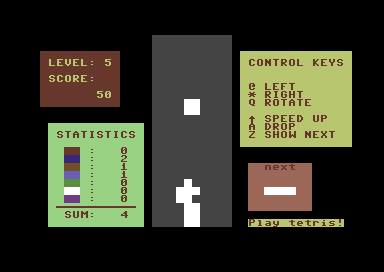
Blocks fell, and he had to maneuver them into place to form horizontal lines as quickly as possible before the screen filled up.Įd Logg during his time at Atari (Image: Ed Logg) It was a puzzle, almost mathematical in its precise execution. With every block he dropped and every line he filled out, his addiction grew. When blocks formed a horizontal line, it flashed and disappeared, and the score increased. The lines could be flipped to face different directions as they fell, like puzzle pieces adjusted to fit their spaces. It was an automated demo, what arcade developers called an attract mode.Īs Logg watched, the AI guided the lines to fill in gaps in the stack. On the monitor of an Atari ST, segmented lines in different shapes – a proper “L,” a mirrored “L,” a plus-shaped block, a straight line that could be flipped horizontally or vertically – rained down from the sky into stacks at the bottom. Released in 1979, Asteroids was in black and white, but the animation was slick and fluid thanks to vector graphics, a technique that rendered graphics from lines.īut the game he was staring at was beyond anything he’d ever seen.


He’d co-created Asteroids at Atari, a game where players piloted a ship and blasted the eponymous space rocks into smaller and smaller bits.


 0 kommentar(er)
0 kommentar(er)
